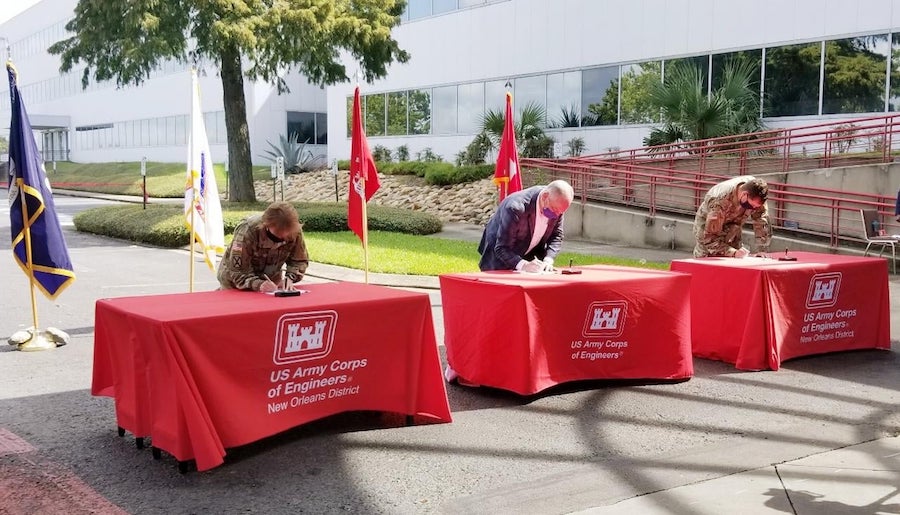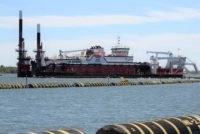Officials with the U.S. Army Corps of Engineers, the state of Louisiana and the Port of New Orleans have signed an agreement to deepen the Lower Mississippi River to 50 ft, from from the current depth of 45 ft.
"The Mississippi River has always been a critical economic engine for the United States and connects our nation’s heartland to the global economy,” said Maj. Gen. Diana Holland, commander of the Corps' Mississippi Valley Division, in a statement announcing the agreement on July 31.
"More capacity means greater efficiency in transportation and less costs for our nation’s producers. From a benefit-cost perspective, that equates to a benefit $7.20 for every dollar spent on operation and maintenance, a significant return on investment," she added.
The project will stretch for more than 256 miles and provide a draft of 50 ft from the Port of Baton Rouge to the Gulf of Mexico. It will provide deep-draft access to ports at New Orleans, South Louisiana, St. Bernard and Plaquemines, and Baton Rouge.
Material dredged from the first 30 miles of the project near the mouth of the Mississippi River will be reused to restore approximately 1,462 acres of marsh habitat.
“When completed, this project will allow larger vessels that can currently use the widened Panama Canal to reach Louisiana ports as far north as Baton Rouge. It will also allow for some vessels to carry heavier loads,” Louisiana Gov. John Bel Edwards (D) said in a statement.
The non-federal sponsor, the Louisiana Dept. of Transportation and Development, has committed $81 million to the approximately $250-million project, which will be done in three phases.
Three-phase project
Phase one will provide a 50-foot channel from the Gulf of Mexico through Southwest Pass to Belmont Crossing, and open approximately 175 miles of the ship channel to the deeper draft, encompassing the Port of New Orleans' entire jurisdiction.
This phase will cost $110 million, with a federal cost share of 75%, or $82.5 million, and a non-federal cost of 25%, or $ 27.5 million, said Jessica Ragusa, Port of New Orleans' communications manager.
Phase two of the dredging will take place from approximately Mile 154 above the Head of Passes—where the Mississippi's main channel branches into three mouths, or passes—to Mile 233.9 above the Head of Passes. It will cost an estimated $47.5 million. The federal share is 75%, or $35.63 million, and the non-federal share is 25%, or $11.88 million, according to Ragusa.
Phase thee will involve relocating or deepening up to six utility pipelines, at an estimated cost of $80.2 million, split 50-50 by the pipeline owners and other nonfederal funds.
Construction is expected to begin in early January 2021. The Corps will advertise and award contracts to contractors, but will also use Corps-owned dredges at times for training stints and emergency situations, Ragusa explains.
“The deepening of phase one, Venice to the Gulf of Mexico, is expected to be completed by early 2022 and .... phase two, to Baton Rouge—by 2024,” she says.





